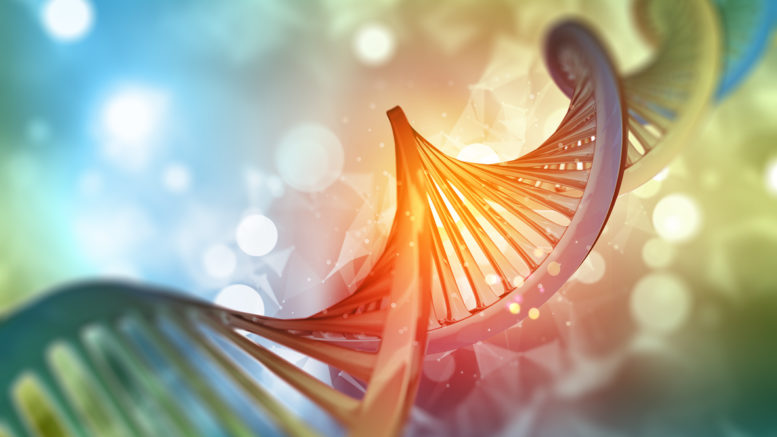Undoubtedly, cancer is the most talked about and researched disease of the past century and will be, for a long time, the most concerning subject for study in the scientific community. Despite the progress and promissory findings, it is evident that the road is long and that researchers will have to deal with this concerning disease for many more years. Protein p53 is considered the guardian of the genome, and it is the primary link of the oncogenic pathway. Hence, research has been oriented towards understanding the way that p53 is involved in the different metabolic networks.
A Brief Introduction To Cancer
Cancer is a group of diseases involving abnormal cell growth that can potentially invade other organs or parts of the body. These cells can form a neoplasm which then becomes a tumor (a group of cells that irregularly divide and form a lump). The number of new cancer cases diagnosed in 2018 in the United States is estimated at 1,735,350 (1). It has been determined that 95% of these cases are due to genetic mutations associated with environmental factors and only 5% are due to an inherited condition (2).
The genes responsible for the normal cell growth are known as proto-oncogenes and those that inhibit cell reproduction are called tumor suppressor genes. Alterations of these genes can potentially lead to an unregulated cell division that consequently causes a tumor (3).
The Guardian Of The Genome
The tumor protein p53 plays a pivotal role in the prevention of cancer formation. The human TP53 gene, which encodes this protein, is located on chromosome 17 (4). It encodes more than 15 isoforms of p53 that bind to our genome and regulate gene expression to impede the formation of random mutations. Therefore, a mutation of the TP53 gene that inhibits its function will impact tumor suppression and can contribute to transformation, metastasis, and drug resistance. Most mutations are within the DNA-binding domain of p53, thus stopping it from transcribing its specific genes (4).
A vast number of the functions of p53 are well known already, but modern protein purification techniques are being employed to fully understand its behavior in the different metabolic pathways. It is involved in the repair of DNA during mitosis, can orchestrate apoptosis and also contributes to the response of short telomeres. In addition, it controls cell growth and division. It has been shown that p53 interacts with more than 100 proteins. One of these proteins is Mdm2. This protein is involved in the suppression of the transcription of p53, and it operates as an inhibitor of p53 expression. Mdm2 is a ligase that triggers the degradation of p53 by the proteasome (5).
USP42 is another enzyme that interacts with p53, and it plays a crucial part in the ability of p53 to respond to stress, such as DNA damage and oxidative stress. In cells that are under stress, p53 synthesis is triggered in order to prevent mutations; in unstressed cells, p53 suffers constant degradation that contributes to keeping p53 levels low (6).
Gene Therapy Based On p53
Research on gene therapy based on p53 has really picked up in the past years, and a number of clinical trials have shown a formidable success. Gene therapy is mainly focused on restoring the normal functioning of p53 in cells with a critically mutated p53 gene. PhiKan083, PRIMA-1, and CP-31398 are molecules that have been shown to reactivate p53 (7). In addition, Gendicine, a recombinant adenovirus designed to express wildtype-p53, was the first gene therapy product used to stimulate the apoptosis of tumor cells (8).
Many therapies target Mdm2 to try to stabilize p53. This is the case of MI-219, which inhibits the MDM2-p53 interaction. This inhibitory action increases the transcription of p53 and helps to control the various cellular responses to diverse stress signals (9). This is one of the few examples that prove that the field of cancer gene therapy is rapidly growing and will be a valuable tool for treating cancer.
SOURCES:
1- https://www.cancer.org/research/cancer-facts-statistics
2- Anand P, Kunnumakkara AB, Kunnumakara AB, Sundaram C, Harikumar KB, Tharakan ST, Lai OS, Sung B, Aggarwal BB (September 2008). Cancer is a preventable disease that requires major lifestyle changes. Pharmaceutical Research. 25 (9): 2097–116. doi:10.1007/s11095-008-9661-9. PMC 2515569 . PMID 18626751.
3- Maley C, et al. Classifying the evolutionary and ecological features of neoplasms. Nat Rev Cancer. Author manuscript; available in PMC 2018 Feb 13. Published in final edited form as:
Nat Rev Cancer. 2017 Oct; 17(10): 605–619. Published online 2017 Sep 15. doi: 10.1038/nrc.2017.69
4- Simabuco F, et al. p53 and metabolism: from mechanism to therapeutics. Oncotarget. 2018 May 4; 9(34): 23780–23823. Published online 2018 May 4. doi: 10.18632/
oncotarget.25267
5- Okoro D, et al. Endogenous Human MDM2-C Is Highly Expressed in Human Cancers and Functions as a p53-Independent Growth Activator. PLoS One. 2013; 8(10): e77643.
Published online 2013 Oct 11. doi: 10.1371/journal.pone.0077643
6- Hock A, Vigneron A, Vousden K. Ubiquitin-specific Peptidase 42 (USP42) Functions to Deubiquitylate Histones and Regulate Transcriptional Activity. J Biol Chem. 2014 Dec 12; 289(50): 34862–34870. Published online 2014 Oct 21. doi: 10.1074/jbc.M114.589267
7- Paulmurugan R, el at. A protein folding molecular imaging biosensor monitors the effects of drugs that restore mutant p53 structure and its downstream function in glioblastoma cells. Oncotarget. 2018 Apr 20; 9(30): 21495–21511. Published online 2018 Apr 20. doi: 10.18632/oncotarget.25138
8- Chen G, et al. Clinical utility of recombinant adenoviral human p53 gene therapy: current perspectives. Onco Targets Ther. 2014; 7: 1901–1909. Published online 2014 Oct 21. doi: 10.2147/OTT.S50483
9- Feng F. MDM2 Inhibition Sensitizes Prostate Cancer Cells to Androgen Ablation and Radiotherapy in a p53-Dependent Manner. Neoplasia. 2016 Apr; 18(4): 213–222.
Published online 2016 Apr 20. doi: 10.1016/j.neo.2016.01.006
